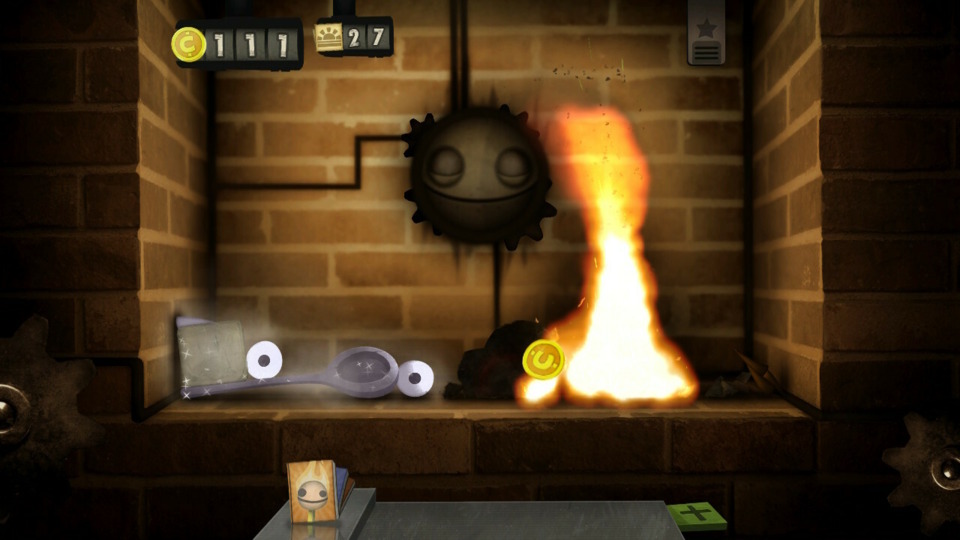Little Inferno is a decent, if shallow, puzzle game with more resonance than ever after the last year and a half.
By bigsocrates 9 Comments
Little Inferno is a video game. When it was released there was some discussion as to whether it was a game or some kind of narrative interactive toy, like a visual novel where you burn stuff instead of chat with high schoolers, but there are enough established rules and gameplay challenges to mark this as clearly in the game category. It’s not a difficult game, and the gameplay isn’t its strongest draw, but it’s a game and should be judged as such.
What kind of game is it? A fireplace simulator puzzle game, of course. You play an unnamed child in a dystopian city locked in permanent winter, where going outside is discouraged and instead kids stay inside and play with toys. The art style and tone of the game seems to be set in a version of Victorian London, but the world doesn’t map exactly on to ours and there are more modern items like televisions and automobiles present in the world. Nonetheless you’re not playing with some dumb video game or action figure playset, you’ve got a fireplace, and your only mode of playing is to burn things. To burn lots of things. All the things, really. You are presented with the fireplace, a series of catalogs from which you can order various items and, crucially, a set of combos that you have to figure out from their names alone. These combos vary from the extremely obvious (the “bike pirate” combo requires you to simultaneously burn a toy pirate and a wooden bicycle) to dumb puns (the “chain email” combo involves Email and a chainsaw) to various combos that require you to observe effects that happen when you burn things (like the “colorful flame” combo that requires you to combine items that change the flame.)
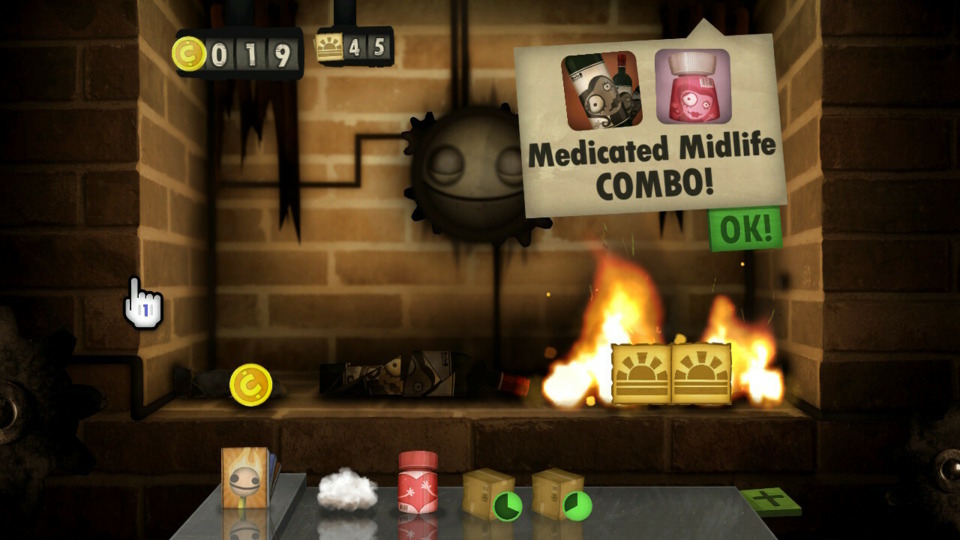
Burning things produces coins and, at random, tickets; and combos also produce those coins but always drop tickets. The coins are used to buy items and new catalogs and the tickets are used to speed up shipping. Yes, the items from the catalogs take time to reach you; generally between a few seconds and a few minutes, and the tickets can buy you instant delivery, which is quite useful when you think you’ve figured out a combo but you have to wait 5 minutes to get one of the items. The opportunity to buy the catalogs is also locked behind hitting a certain number of combos, so to advance to the next catalog you need to hit the combo gate, buy everything from the prior catalog at least once, and save up enough coins.
That means this is a puzzle game. The combos aren’t necessarily difficult to figure out, but some of them can require a few tries, and because later combos mix and match from all the catalogs unlocked so far the number of potential solutions increases as you get deeper into the game. There are also some management aspects because you have limited money and inventory slots. Burning things gives you more coins than they cost, so you’re consistently making a profit, but there are definitely times when you’re cash-constrained, such as when you’re waiting for some expensive items to arrive in the mail or if you’ve just spent a bunch of coins on something that’s not burnable like a catalog or an inventory upgrade. There are insects that appear in the fireplace from time to time that always drop a few coins so you can never fully screw yourself by running out of money, but there were many times in the game where I had to save up for an item to complete a catalog or try a combo idea that involved something expensive.
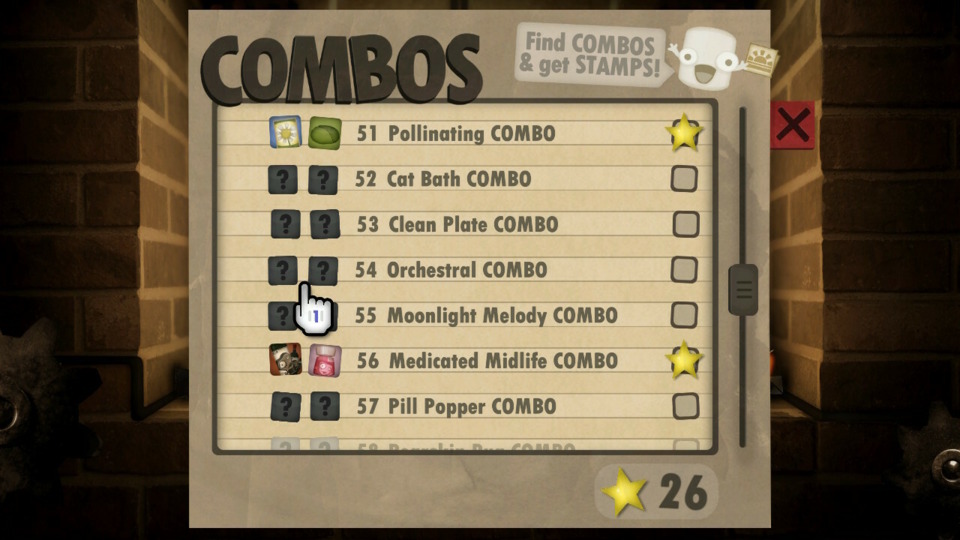
Burning things is fun in real life and in this game. The drawn art style is nice, and the flame animations are appealing, but what really makes the burning enjoyable is the way some of the objects react. An egg sack might burst and release spiders that also burn, or a ‘doll’ might react with panic and screams of pain when you set it on fire. It’s very macabre and dark, but it never quite reaches the level of gruesomeness that made me uncomfortable. It has the sadistic appeal of setting ants on fire with a magnifying glass, but of course you’re not actually hurting any real ants.
If this was just a game about burning things it would be mildly amusing but pretty boring, but all of that is interwoven with a narrative. As the game advances you find out more about the world your character lives in, and you are soon contacted in the mail by another child who is also burning things in her Little Inferno fireplace. She will sometimes ask you to send her items, but the conversation is mostly one way, with her prattling on about whatever’s in her mind and basically inventing a relationship with you out of her loneliness. You also get promotional material from the company that makes the Little Inferno fireplace, with a twisted version of corporate promotion that reads mostly as satire but sometimes strikes uncomfortably close to home.
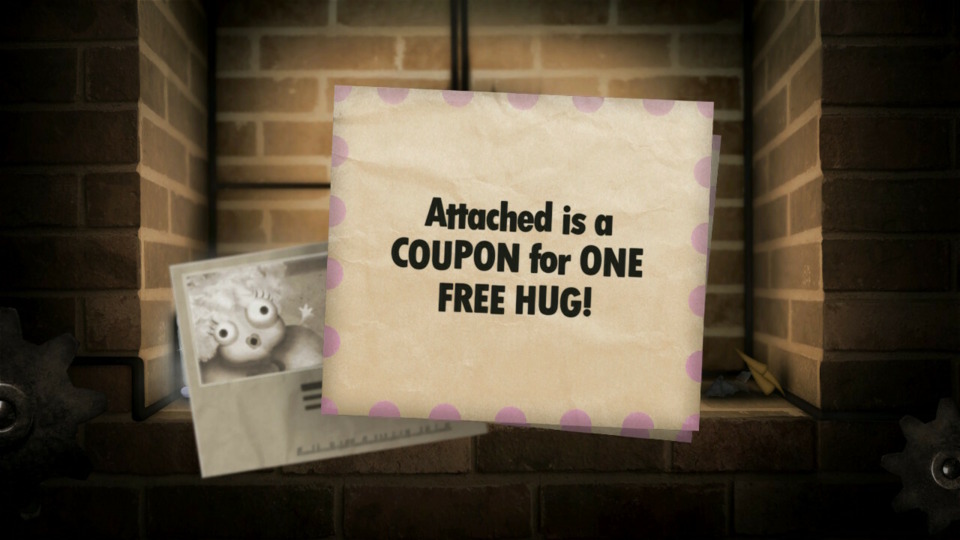
The combination of playing with the various interactions you get from burning things, trying to hit your combos, managing your money and advancing the narrative is enough to make Little Inferno compelling for its slightly over 3 hour run time. The game doesn’t excel in any particular area, but it’s an enjoyable overall package. It helps that the aesthetics are so different from those of most games, and that everything feels polished and thought through. Some people have claimed that the game is intentionally unfun by using time gated mechanics from mobile games in the forced wait for items, but while that can certainly be annoying I found that you get enough tickets that it’s not a real problem, and if you mange your inventory properly and buy some quicker arriving items while the longer ship times tick down you won’t have a lot of actual downtime. It certainly functions as a commentary on digital consumerism and time gating, but it’s not so punishing that it becomes actively unpleasant.
The game’s themes are also surprisingly resonant to the pandemic era, especially given it was released in 2012. This is a game about environmental disaster, isolation, consumerism, and ennui. Your character is literally buying things just to burn them up in a furnace, with everything just going up the chimney as ash and smoke. The fireplace also serves to keep you warm, but it’s implied that the environmental disaster might be partially caused by all the city’s kids burning things in their fireplaces. This has a direct analog in the influence of consumerism and especially air conditioning on climate change in our real world. There are adults in the world but they seem to be all absentee parents, caught up in the rat race and uninvolved in the children’s lives, leaving them to be raised by a fireplace. The game more or less directly tells the player they are wasting their lives by watching a virtual fireplace, and the waiting mechanics reinforce this because sometimes you are literally doing nothing, but just like the game’s children we’ve all been trapped inside for a long time by forces outside our control.
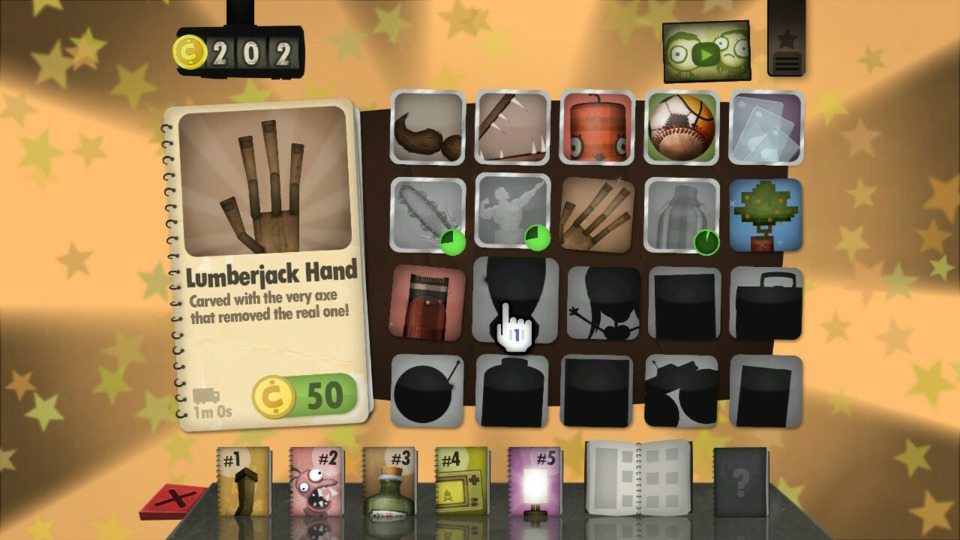
I don’t think the game actually has that much to say about its themes, and its ending is kind of disappointing given everything it sets up, but it surprised me how closely the themes from this 2013 title matched this moment in time. Of course consumerism, environmental destruction, and social isolation existed 8 years ago, but the feeling of being sealed in within a still mostly functional society is something newer, and this game captures it pretty well.
Little Inferno was a launch game for the Wii U, though it came to PC too, and it was one of the games on that platform that I was intrigued by but never got a chance to play. It also came to the Switch near launch. This was clearly designed with the Wii U’s gamepad in mind, and while it works well on the Switch’s touch screen, it is hard to get the sense of really sitting in front of a giant fireplace on the Switch’s smaller screen. For docked play it relies on gyro controls, but you have to use the Joycons; the pro controller is not supported. It’s okay but you have to recenter the control regularly, as you always do with gyros, and it’s not the ideal way to play. I think PC would likely be better.
I loved World of Goo and the developer of that is part of the Little Inferno team. It’s not as fun or wildly creative as that WiiWare stand out, but it has the same kind of charm. The game stood out at launch because it was one of the few original titles for the Wii U that was not made by Nintendo, but it didn’t spark a Nintendo revolution on that platform. That would have to wait for the Switch. I would not call it a must play title, but if you’re looking for a laid back simple puzzle game with a decent story and some fun aesthetics it will fit the bill. Summer’s coming up and it looks like most of us are going to be able to venture out back into the company of other people soon, but if you’re ever stuck indoors on a snowy day, or find yourself unable to sleep some night, you could do a lot worse than this.
